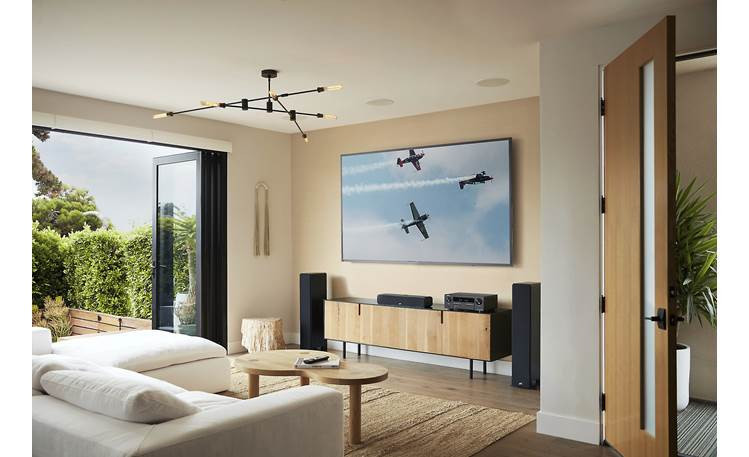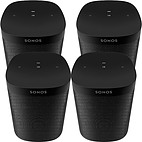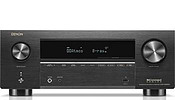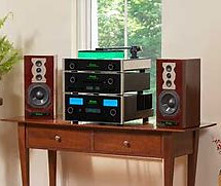
Introduction: How to Buy a Home Audio System
Having a good home audio system is essential for anyone who enjoys music, movies, or simply wants to enhance their overall audio experience at home. A high-quality audio system can bring your favorite songs to life, make movies feel more immersive, and create a more enjoyable atmosphere in your living space. In this blog post, we will provide a comprehensive guide on how to buy a home audio system, covering everything from understanding your audio needs to evaluating sound quality and choosing the right components for your system. Whether you are a beginner or an experienced audiophile, this post will help you make an informed decision when purchasing a home audio system.
Understanding Your Audio Needs: A Guide to Buying a Home Audio System
Before diving into the world of home audio systems, it is important to identify your specific audio needs. Are you primarily interested in listening to music? Do you enjoy watching movies and want a system that can provide a cinematic experience? Are you looking for a system that can be easily integrated with your existing smart home setup? Understanding your audio needs will help you narrow down your options and choose the right system for you.
When you want to know how to buy a home audio system, there are several factors to consider. These include the size of your room, your budget, the type of audio sources you will be using (such as CDs, vinyl records, streaming services), and the level of control and customization you desire. It is also important to consider the future scalability of your system, as you may want to add additional components or upgrade your system in the future.
To choose the right system for your needs, here are some tips to keep in mind:
1. Research different brands and models: Take the time to research different brands and models of home audio systems. Read reviews, compare features and prices, and consider the reputation and reliability of the brand.
2. Listen to different systems: If possible, visit a store or showroom where you can listen to different home audio systems. This will give you a better idea of the sound quality and overall performance of each system.
3. Seek expert advice: If you are unsure about which system to choose, consider seeking advice from audio professionals or enthusiasts. They can provide valuable insights and recommendations based on their experience and knowledge of how to buy a home audio system.
The Basics of Home Audio Systems: What You Need to Know Before You Buy
Before purchasing a home audio system, it is important to understand the different components that make up a typical system. These components include speakers, amplifiers, receivers, and source devices such as CD players or streaming devices.
Speakers are the most important component of any home audio system. They are responsible for producing sound and can greatly impact the overall audio quality. There are different types of speakers available, including floor-standing speakers, bookshelf speakers, and in-wall or in-ceiling speakers. Each type has its own advantages and considerations, so it is important to choose the right speakers for your specific needs.
Amplifiers and receivers are responsible for powering the speakers and processing the audio signals. Amplifiers increase the power of the audio signal, while receivers combine the functions of an amplifier and a radio tuner and the other components you wish to connect. When choosing an amplifier or receiver, consider factors such as power output, connectivity options, and compatibility with your other components.
Source devices are the devices that provide the audio signal to your home audio system. These can include CD players, turntables, streaming devices, or even your smartphone or computer. When choosing source devices, consider factors such as audio quality, compatibility with your other components, and ease of use.
Choosing the Right Speakers for Your Home Audio System

When it comes to choosing speakers for your home audio system, there are several factors to consider. These include the size of your room, your listening preferences, and your budget.
The size of your room will determine the size and power requirements of your speakers. Larger rooms may require larger speakers with more power to fill the space with sound. On the other hand, smaller rooms may benefit from smaller speakers that can provide a more focused and detailed sound.
Your listening preferences will also play a role in choosing the right speakers. If you enjoy listening to music with a lot of bass, you may want to consider speakers with a built-in subwoofer or a separate subwoofer. If you prefer a more balanced sound, you may want to choose speakers that provide a wider frequency response.
Budget is another important consideration when choosing speakers. There are speakers available at various price points, ranging from budget-friendly options to high-end models. It is important to set a budget and prioritize the features and performance that are most important to you.
When choosing speakers, it is also important to consider factors such as the type of speaker (floor-standing, bookshelf, in-wall), the materials used in construction (wood, plastic, metal), and the overall design and aesthetics of the speakers.
Amplifiers and Receivers: What to Look for When Buying a Home Audio System
Amplifiers and receivers are essential components of any home audio system. They are responsible for powering the speakers and processing the audio signals.
When choosing an amplifier or receiver, there are several factors to consider. These include power output, connectivity options, and compatibility with your other components.
Power output is an important consideration when choosing an amplifier or receiver. The power output is measured in watts per channel (WPC) and determines how loud and clear the audio will be. It is important to choose an amplifier or receiver that has enough power to drive your speakers effectively.
Connectivity options are also important when choosing an amplifier or receiver. Consider the types of audio sources you will be using and make sure that the amplifier or receiver has the necessary inputs and outputs to connect your devices. Common connectivity options include HDMI, optical, coaxial, and analog inputs and outputs.
Compatibility with your other components is another important consideration. Make sure that the amplifier or receiver is compatible with your speakers, source devices, and any other components you plan to use. Check the specifications and compatibility information provided by the manufacturer to ensure that all your components will work together seamlessly.
Sound Quality Matters: How to Evaluate Home Audio Systems
When buying a home audio system, sound quality should be one of your top priorities. After all, the main purpose of a home audio system is to provide high-quality audio that is enjoyable to listen to.
When evaluating sound quality, there are several factors to consider. These include frequency response, distortion levels, dynamic range, and overall tonal balance.
Frequency response refers to the range of frequencies that a speaker or audio system can reproduce. A wider frequency response means that the system can reproduce a wider range of sounds, resulting in a more detailed and accurate sound reproduction.
Distortion levels refer to the amount of distortion introduced by the audio system. Distortion can occur when the audio signal is not reproduced accurately, resulting in a loss of detail and clarity. Low distortion levels are desirable for a high-quality audio system.
Dynamic range refers to the difference between the loudest and softest sounds that a system can reproduce. A wider dynamic range means that the system can reproduce both quiet and loud sounds accurately, resulting in a more immersive and realistic listening experience.
Overall tonal balance refers to the balance between different frequencies in the audio signal. A well-balanced system will reproduce all frequencies accurately, resulting in a natural and pleasing sound.
When evaluating sound quality in a store or showroom, it is important to listen to different types of music or audio content that you are familiar with. Pay attention to details such as clarity, detail, imaging, and soundstage. Take your time and listen to different systems to get a better idea of the sound quality and overall performance.
Wireless vs. Wired Home Audio Systems: Which is Right for You?
When choosing a home audio system, you will need to decide between a wireless or wired system. Both options have their own advantages and considerations, so it is important to choose the right system for your needs.
Wireless home audio systems offer the convenience of wireless connectivity, allowing you to stream music from your smartphone, tablet, or computer without the need for cables. They are easy to set up and can be expanded or upgraded easily. However, wireless systems may be more susceptible to interference and may not offer the same level of audio quality as wired systems.
Wired home audio systems offer a more reliable and stable connection, resulting in better audio quality. They are not affected by interference and can provide a more consistent and accurate sound reproduction. However, wired systems require cables to connect the different components, which can be more cumbersome and may require professional installation. It’s generally a matter of running a wire or cable such as HDMI from point A to point B.
When choosing between wireless and wired systems, consider factors such as your budget, the level of convenience you desire, and the importance of audio quality. If convenience is a top priority and you are willing to sacrifice some audio quality, a wireless system may be the right choice for you. If audio quality is your main concern and you are willing to deal with cables and installation, a wired system may be the better option.
Home Audio System Setup: Tips for Getting the Best Sound Quality
Setting up your home audio system properly is essential for achieving the best sound quality. Here are some tips to help you set up your system for optimal performance:
1. Speaker placement: The placement of your speakers can greatly impact the sound quality. Ideally, speakers should be placed at ear level and positioned equidistant from each other and from the listening area. Avoid placing speakers too close to walls or corners, as this can result in boomy or muddy bass.
2. Wiring: Use high-quality speaker cables and interconnects to minimize signal loss and interference. A #14 copper wire is best for speakers. Keep cables away from power cables and other sources of electromagnetic interference. Use cable management solutions to keep cables organized and minimize clutter.
3. Calibration: Many home audio systems come with built-in calibration features that can help optimize the sound quality. Follow the instructions provided by the manufacturer to calibrate your system properly. This may involve adjusting speaker levels, setting crossover frequencies, and configuring room correction settings. The Yamaha YPAO calibration microphone pictured.
4. Room acoustics: Consider the acoustics of your room when setting up your home audio system. Hard surfaces such as walls, floors, and ceilings can cause sound reflections and reverberations, resulting in a less accurate sound reproduction. Use acoustic treatments such as diffusers, absorbers, and bass traps to minimize these reflections and improve the overall sound quality.
5. Experiment and fine-tune: Don’t be afraid to experiment with different speaker placements, cable configurations, and settings to find the best sound quality for your room. Fine-tuning your system can make a significant difference in the overall audio performance.
Budgeting for a Home Audio System: How Much Should You Expect to Spend?
The cost of a home audio system can vary greatly depending on the brand, model, and features you choose. It is important to set a budget and prioritize the features and performance that are most important to you.
Entry-level home audio systems can start at around $500 and can provide decent sound quality for casual listening. Mid-range systems can range from $1,000 to $5,000 and offer better performance and more features. High-end systems can cost upwards of $10,000 and provide audiophile-grade sound quality and advanced features.
Factors that can affect the cost of a home audio system include the number and type of components you choose, the brand and model you choose, and any additional features or accessories you may need. It is important to consider your budget and prioritize the components and features that are most important to you.
When budgeting for a home audio system, it is also important to consider any additional costs such as cables, speaker stands or mounts, and installation fees if necessary. These costs can add up, so make sure to factor them into your budget.
Top Brands and Models: A Review of the Best Home Audio Systems on the Market
There are many top brands and models of home audio systems available on the market. Here are some of the top brands and models to consider:

1. Sonos: Sonos is known for its wireless home audio systems that offer excellent sound quality and easy integration with other smart home devices. The Sonos Play:5 and Sonos Beam are popular choices for music and home theater setups.
2. Bose: Bose is a well-known brand that offers a wide range of home audio systems. The Bose SoundTouch and Bose Lifestyle systems are popular choices for their ease of use and excellent sound quality.
3. Yamaha: Yamaha is known for its high-quality audio products, including home audio systems. The Yamaha MusicCast and Yamaha Aventage series offer excellent sound quality and a wide range of features.
4. Denon: Denon is a respected brand in the audio industry, known for its high-quality amplifiers and receivers. The Denon AVR-X series offers excellent sound quality and advanced features for home theater setups.
5. Klipsch: Klipsch is known for its high-performance speakers that deliver powerful and detailed sound. The Klipsch Reference series and Klipsch Heritage series are popular choices for music enthusiasts.
When choosing a home audio system, it is important to consider your specific needs and preferences. Research different brands and models, read reviews, and listen to different systems if possible. Consider factors such as sound quality, features, ease of use, and compatibility with your other components.
Maintenance and Care: How to Keep Your Home Audio System in Top Condition
Proper maintenance and care are essential for keeping your home audio system in top condition and ensuring its longevity. Here are some tips to help you care for and maintain your system:
1. Cleaning: Regularly clean your speakers, amplifiers, and receivers to remove dust and dirt. Use a soft cloth or brush to gently wipe the surfaces. Avoid using harsh chemicals or abrasive materials that can damage the components.
2. Storing: If you need to store your home audio system for an extended period, make sure to clean and disconnect all the components properly. Store them in a cool, dry place away from direct sunlight and extreme temperatures.
3. Troubleshooting: If you encounter any issues with your home audio system, consult the user manual or contact the manufacturer for troubleshooting tips. Avoid attempting any repairs or modifications yourself unless you have the necessary knowledge and experience.
4. Software updates: Many home audio systems come with firmware or software updates that can improve performance and add new features. Check the manufacturer’s website regularly for any updates and follow the instructions provided to update your system.
5. Professional servicing: If you encounter any major issues with your home audio system or if you want to optimize its performance, consider seeking professional servicing. A qualified technician can diagnose and repair any issues and provide expert advice on how to improve the performance of your system.
Proper maintenance and care will not only ensure the longevity of your home audio system but also help maintain its ability to reproduce high quality audio.
Please come back again as Audio Video Adventures offers all the latest in Projectors, Receivers, Speakers, and accessories as well as everything else you need for the ideal home theater experience.